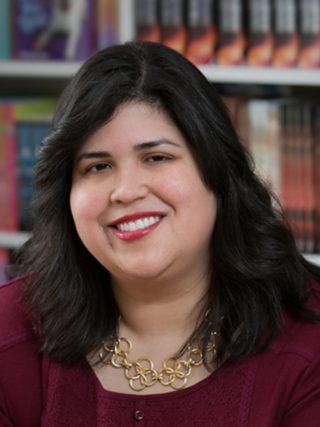
Laurie Morrison taught middle school for 10 years before writing Every Shiny Thing, her middle-grade debut with co-author Cordelia Jensen. She is also the author of Up for Air, which earned starred reviews from Kirkus and Publishers Weekly and was a Junior Library Guild Selection, as well as the forthcoming Saint Ivy, which is due out from Abrams in spring 2021. She holds an MFA in Writing for Children and Young Adults from Vermont College of Fine Arts and lives with her family in Philadelphia.
Visit her online here and follow her on Twitter or Instagram.
Vermont College of Fine Arts is a global community of artists continuously redefining what it means to be an arts college. It is accredited by the New England Commission on Higher Education (NECHE) and offers the Master of Fine Arts degree in a variety of fields, including Writing, Writing for Children & Young Adults, and Writing & Publishing, along with an International MFA in Creative Writing & Literary Translation. With low-residency and fully residential options, VCFA has the graduate program to fit your needs. Learn more at vcfa.edu.
88 Cups of Tea presents Essay & Podcast Series: Intimate Stories from Writers in partnership with our friends at VCFA
“What’s your favorite thing you’ve ever written?”
This is a question kids ask me a lot when I do school visits and Skype chats, and it’s a tricky one. The truth is, my answer depends on what I’m working on and where I am in the drafting or revision process.
Right now, I’m 55 pages into a draft of a brand-new project, and I’m head-over-heels in love with it. I’m swept up in all the potential. I adore these characters. I’m passionate about these themes. Today, this new project is my favorite thing I’ve ever written. Today, I believe it will be my very best work ever! But soon, I will be in the thick of the confidence-shaking, excitement-sucking middle of the draft, and my answer will likely change.
I tend to be completely enamored with a new story when I begin writing, but somewhere between page 50 and page 100, my adoration wanes. The writing gets really difficult, and I start to question whether the book is going to be any good. I reach a gut-check moment, when I have to ask myself whether I love the project enough to put in all the time and energy it will take to achieve my vision for it. Sometimes I even have to ask myself whether I can achieve that vision.
I often make some adjustments and push through, and then eventually—perhaps by the end of the draft, perhaps by the end of a big revision—my love for the project returns. Other times, I decide a project isn’t right for me, or it isn’t right for me yet, and I step away.
I don’t think my pattern is unusual. A lot of writers fall out of love with a manuscript at some point in the drafting or editing process, and when that happens, it’s hard to know how to proceed. How can you rekindle that passion? How can you tell if it’s time to move on? Here are five things that might help if you’ve “lost that lovin’ feeling” for your book.
1.) Freewrite about the essence of your story.
Years ago, I had to write an intimidatingly large academic term paper, and my professor suggested I put away all my piles of research and take ten minutes to freewrite about the most important things I wanted to say. That fast, low-pressure exercise gave me a lot of clarity, and I do something similar with novels-in-progress now.
I like close my laptop, put away my notes and outlines, turn to a fresh sheet of paper, set a timer, and freewrite by hand. I explore prompts like these and give myself around five minutes per prompt.
- This is the story of…
- At its core, it’s really about how…
- I am the right person to tell this story because…
- I care about these characters because…
- I hope readers will come away from this story thinking about how…
It’s illuminating to see what your brain does with these prompts when you give yourself time and space to think on paper without the pressure to produce writing that’s “good.”
2.) Change the point of view.
Last summer, I had an impending deadline for my next book, and I was floundering. I didn’t feel connected to the main character anymore, so I tried an experiment. I’d been writing the book in first-person point of view, but I opened a new document and rewrote the first chapter in close third person. With that tiny bit of distance, I felt so much more love and compassion for my character. I rewrote the whole draft from that third-person POV, and that turned out to be what the story needed.
You might experiment with switching perspectives, too. Try third person instead of first, or vice versa. Try present tense instead of past, past instead of present, or distant past tense instead of recent past. Or try writing a scene from a secondary character’s perspective.
Perhaps, like me, you’ll decide to rewrite your whole book with a different point of view. Perhaps this will simply be a generative exercise that offers some new insights. Either way, the process of seeing the story from a different vantage point can make things click into place.
3.) Consider (or reconsider) what your main character wants, why the character wants it, what’s at stake, and what’s getting in the way.
Pretty much every compelling story features a character who wants something they don’t currently have and might not get. If you haven’t yet articulated your character’s desire, the obstacles, and the stakes, stop and think about those things. Does your character want to escape a dangerous situation? Make someone proud? Win a contest? Win the heart of the person they love? Why? Who or what might stop them from doing this? What will happen if they don’t get what they want? The answers to these questions should inform the plot of the story; figuring these things out might help you reshape the story arc if it’s not quite working.
If you have articulated these things, go back and see if what you’ve articulated still rings true. It’s possible that your character is evolving and surprising you, so you might need to rethink these key questions and, in turn, reshape parts of the story.
Some writers push through a first draft quickly without going back to revise. If that works for you, great! If you figure out something that changes earlier scenes, make a note but keep writing. But if pushing through a fast draft doesn’t work for you, that’s okay, too. Personally, I am a two-steps-forward, one-step-back drafter. As I get to know my characters and their desires better, I like to go back and revise earlier scenes to strengthen my understanding of the story. I’ve tried pushing ahead and gotten all twisted around and disconnected. So, you do you!
4.) Take a break.
In early 2016, I stalled out halfway through a draft of my novel Up for Air. I was so stuck that I didn’t believe the story was salvageable. I put it aside to work on something else, and then I had a baby and took a few months off from writing altogether.
After that long break, I went back to my Up for Air draft and saw that I could simply get rid of a whole boring subplot. After I cut that, I remembered what had made the project feel special and zoomed through the rest of the draft.
Sometimes, you need to take some time away so you can see a book with fresh eyes. Maybe that means three weeks; maybe it means three months. Occasionally, you might not feel a pull back to a project. You might look back with fresh eyes and feel kind of meh. That’s happened to me, too. But even if you take an indefinite break, try to trust that the work wasn’t wasted. I’ve been amazed at how little pieces from my abandoned projects come back to infuse new ones.
5.) Get feedback.
I don’t always like to share my work with other people early on because I like to give myself space to cement my own vision for a project first. But if I’m losing confidence or momentum, it helps me to ask for feedback earlier than I think I want to. A few questions or observations from a critique partner can help me see possibilities where I was only seeing problems. I like to have two readers if possible; having too many opinions can disorient me, but having more than one perspective can really open things up. If a reader tells you something isn’t working, listen! But if they give you a suggestion for how to fix the issue, make sure that suggestion feels right. You might want to use their solution, or you might come up with another way to address the problem they’ve pointed out. You know your intentions for the story best.
If you do fall out of love with your book, know that you are not alone. Great books pull readers along so smoothly that they seem like they must have been easy to write…but they probably weren’t. Writing is exhilarating and satisfying, but it’s also very, very hard.
I hope these tips help you rekindle your passion for your story so that by the time you finish drafting and revising, your current project is your favorite thing you’ve ever written. Well, until you get a shiny new idea and the giddy, infinite-potential beginning stage hits again, that is…

Laurie Morrison taught middle school for 10 years before writing Every Shiny Thing, her middle-grade debut with co-author Cordelia Jensen. She is also the author of Up for Air, which earned starred reviews from Kirkus and Publishers Weekly and was a Junior Library Guild Selection, as well as the forthcoming Saint Ivy, which is due out from Abrams in spring 2021. She holds an MFA in Writing for Children and Young Adults from Vermont College of Fine Arts and lives with her family in Philadelphia.
Visit her online here and follow her on Twitter or Instagram.
Vermont College of Fine Arts is a global community of artists continuously redefining what it means to be an arts college. It is accredited by the New England Commission on Higher Education (NECHE) and offers the Master of Fine Arts degree in a variety of fields, including Writing, Writing for Children & Young Adults, and Writing & Publishing, along with an International MFA in Creative Writing & Literary Translation. With low-residency and fully residential options, VCFA has the graduate program to fit your needs. Learn more at vcfa.edu.












